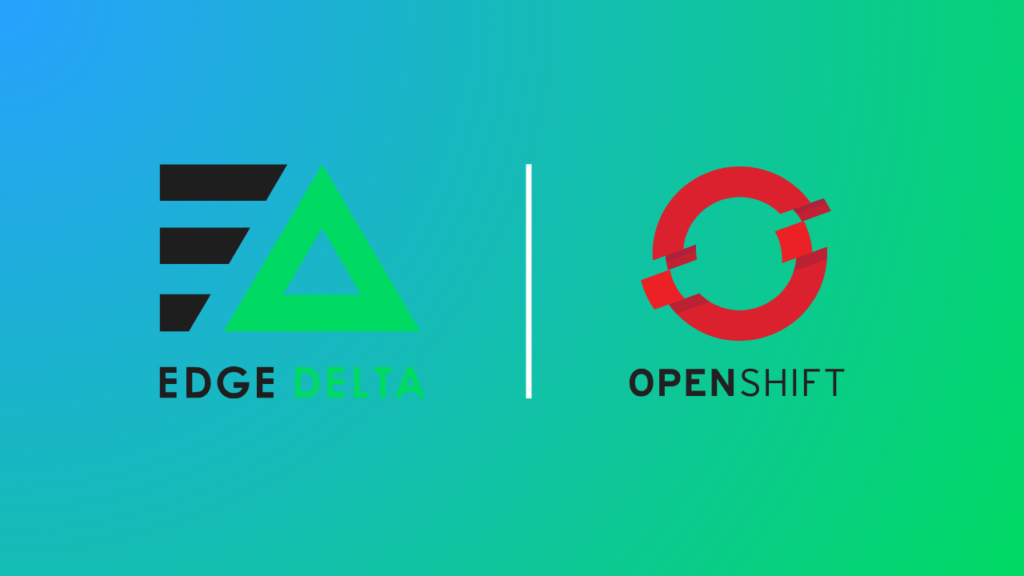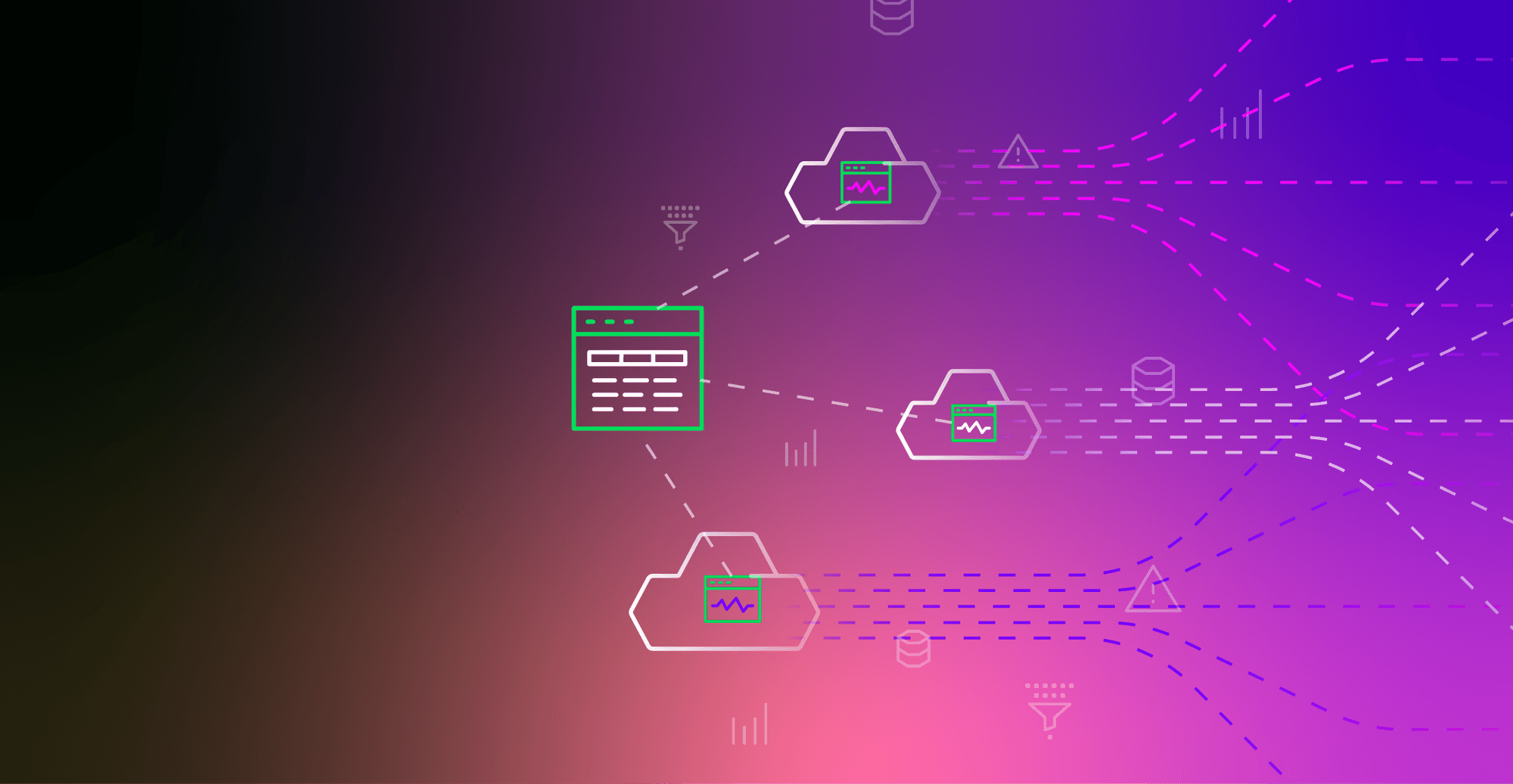In today’s fast-paced digital landscape, enterprise-grade observability is critical — especially in highly regulated industries like banking, where security and reliability are paramount. OpenShift has become a standard platform for banks due to its robust security features and comprehensive container management capabilities. At Edge Delta, we’ve helped customers harness the power of OpenShift with our secure and highly performant telemetry pipelines. In this blog post, we’ll share how our team solved common OpenShift deployment challenges, and how our product streamlines your monitoring and troubleshooting workflows.
The OpenShift Advantage in Enterprise Environments
OpenShift is an enterprise Kubernetes platform that automates container orchestration, scaling, and upgrades while enforcing stringent security standards. Its built-in tools simplify the deployment of containerized applications, offering:
- Enhanced Security: With custom Security Context Constraints (SCC) and strict network policies, OpenShift is ideal for environments where regulatory compliance is non-negotiable.
- Operational Efficiency: Automation and self-service environments allow development teams to iterate rapidly, while operations teams maintain robust oversight.
- Flexibility: Its hybrid and multi-cloud capabilities help avoid vendor lock-in, enabling businesses to deploy where it makes the most sense.
These features make OpenShift a preferred choice for banks and other enterprises, yet they also introduce unique challenges when integrating additional software layers — like an observability agent.
Edge Delta and OpenShift: A Natural Partnership
At Edge Delta, we designed our telemetry pipeline product with a deep understanding of the OpenShift environment. Our solution is engineered to integrate seamlessly with OpenShift clusters while addressing common pain points such as:
- DNS and Network Policies: OpenShift’s strict network policies can interfere with standard DNS configurations. We provide a streamlined approach that allows for DNS override via custom Helm parameters.
- Security and Privilege Management: Recognizing that OpenShift requires tailored security settings, we’ve built support for pod security contexts directly into our Helm chart. This ensures our agents can run with the necessary privileges without compromising the cluster’s security posture.
- eBPF and KSM Metrics Collection: We address the inherent eBPF restrictions within OpenShift and manage the authentication requirements for Kube State Metrics. Our approach ensures authenticated traffic to Kube State Metrics servers, enabling granular visibility without compromising security or performance.
By aligning our product with OpenShift’s operational model, we help our customers — especially those in highly regulated sectors — achieve full observability with minimal installation friction.
Overcoming Deployment Challenges: Technical Insights
Deploying observability tools on OpenShift comes with its own set of challenges. Here’s how we addressed some of the most critical issues:
1. Custom Security Context and Pod Configuration
OpenShift enforces strict security policies through SCCs, which can prevent containers from running with elevated privileges. To resolve this, we:
Implemented a Custom SCC: We enabled a configuration flag in our Helm chart to create the necessary security context automatically. For example:helm upgrade edgedelta edgedelta/edgedelta -i --version v1.29.0 \
--set podSecurity.securityContextConstraints.create=true \
-n edgedelta --create-namespace
Provided a Dedicated Values File: Our documentation includes an openshift-specific values YAML that sets the appropriate security parameters, reducing the need for manual tweaks. Here are the full details on the security context needs for each feature: https://github.com/edgedelta/charts/blob/master/charts/edgedelta/templates/security_context_constraint.yaml
{{- if .Values.podSecurity.securityContextConstraints.create }}
apiVersion: security.openshift.io/v1
kind: SecurityContextConstraints
metadata:
name: {{ include "edgedelta.fullname" . }}
labels:
{{- include "edgedelta.labels" . | nindent 4 }}
users:
- system:serviceaccount:{{ .Release.Namespace }}:{{ include "edgedelta.fullname" . }}
# Allow host ports when any host port being used
{{ $usePorts := gt (len .Values.ports) 0 }}
allowHostPorts: {{ or .Values.storePort .Values.profilerPort $usePorts }}
# Allow host PID when eBPF tracer is enabled
allowHostPID: {{ .Values.tracerProps.enabled }}
# Allow host PID when eBPF tracer is enabled
allowHostNetwork: {{ .Values.tracerProps.enabled }}
# Allow hostPath for eBPF and container logs
volumes:
{{ toYaml .Values.podSecurity.volumes | indent 2 }}
# Use the `spc_t` selinux type to access the
# docker/cri socket + proc and cgroup stats
seLinuxContext:
{{- if .Values.podSecurity.seLinuxContext }}
{{ toYaml .Values.podSecurity.seLinuxContext | indent 2 }}
{{- end }}
# eBPF requires some specific seccomp and capabilities
seccompProfiles:
{{ toYaml .Values.podSecurity.seccompProfiles | indent 2 }}
allowedCapabilities:
{{ toYaml .Values.podSecurity.capabilities | indent 2 }}
#
# The rest is copied from default SCCs
#
allowHostDirVolumePlugin: true
allowHostIPC: false
allowPrivilegedContainer: {{ or .Values.podSecurity.privileged .Values.tracerProps.enabled }}
allowedFlexVolumes: []
defaultAddCapabilities: []
fsGroup:
type: MustRunAs
readOnlyRootFilesystem: false
runAsUser:
type: RunAsAny
supplementalGroups:
type: RunAsAny
# If your environment restricts user access to the Docker socket or journald (for logging)
# create or use an existing group that has access and add the GID to
# the lines below (also remove the previous line, `type: RunAsAny`)
# type: MustRunAs
# ranges:
# - min: <min-group-ID>
# - max: <max-group-ID>
requiredDropCapabilities: []
{{- end }}
2. Handling DNS and Network Overrides
OpenShift’s network policies can complicate DNS resolution for your observability tools. Our solution allows for:
- DNS Override Configuration: By incorporating DNS selector overrides into our Helm commands, we ensure that our agents correctly resolve network endpoints even in restricted environments.
// Check for custom DNS service override from environment variables.
// For example, set ED_DNS_SERVICE_NAMESPACE and ED_DNS_SERVICE_NAME to override the defaults.
customDNSNamespace := env.Get(env.EDDnsServiceNamespace)
customDNSName := env.Get(env.EDDnsServiceName)
// Helper function to retrieve a service by namespace/name.
getService := func(namespace, name string) (*corev1.Service, error) {
svc, err := apiClient.CoreV1().Services(namespace).Get(ctx, name, metav1.GetOptions{})
if err != nil {
return nil, err
}
return svc, nil
}
var svc *corev1.Service
var err error
var dnsServiceInfo string
// 1. Try custom override if provided.
if customDNSNamespace != "" && customDNSName != "" {
svc, err = getService(customDNSNamespace, customDNSName)
if err == nil {
dnsServiceInfo = fmt.Sprintf("%s/%s", customDNSNamespace, customDNSName)
}
}
// 2. Try kube-system/kube-dns (common in many Kubernetes clusters).
if svc == nil {
svc, err = getService("kube-system", "kube-dns")
if err == nil {
dnsServiceInfo = "kube-system/kube-dns"
}
}
// 3. Fallback: try openshift-dns/dns-default (common in OpenShift).
if svc == nil {
svc, err = getService("openshift-dns", "dns-default")
if err == nil {
dnsServiceInfo = "openshift-dns/dns-default"
}
}
3. Addressing eBPF and Metrics Collection
For customers using advanced observability features like eBPF for tracing and metrics:
- eBPF Considerations:
eBPF programs run in a restricted kernel environment, and one key limitation is the small 512-byte stack size available per program. When using uprobes — which attach eBPF programs to user-level functions — the typical in-function stack usage may exceed this limit. To work around it, some implementations “offload” larger stack allocations to BPF maps.
- Kube-State Metrics:
Integration with kube-state metrics is supported out-of-the-box, provided the metrics service is installed in your OpenShift cluster. Our team continuously monitors and adjusts the integration to account for different deployment scenarios.
Conclusion
Edge Delta’s integration with OpenShift represents a significant step forward in delivering secure, enterprise-grade observability. By tackling deployment challenges head-on — whether it’s managing strict security policies, handling DNS configurations, or enabling advanced metrics collection — we ensure that your infrastructure remains transparent, compliant, and highly performant.
For a deeper dive into our configuration and installation steps, be sure to check out our detailed documentation. Join us on this journey to elevate your observability, and feel confident knowing that Edge Delta is here to power your OpenShift environments with precision and reliability.






